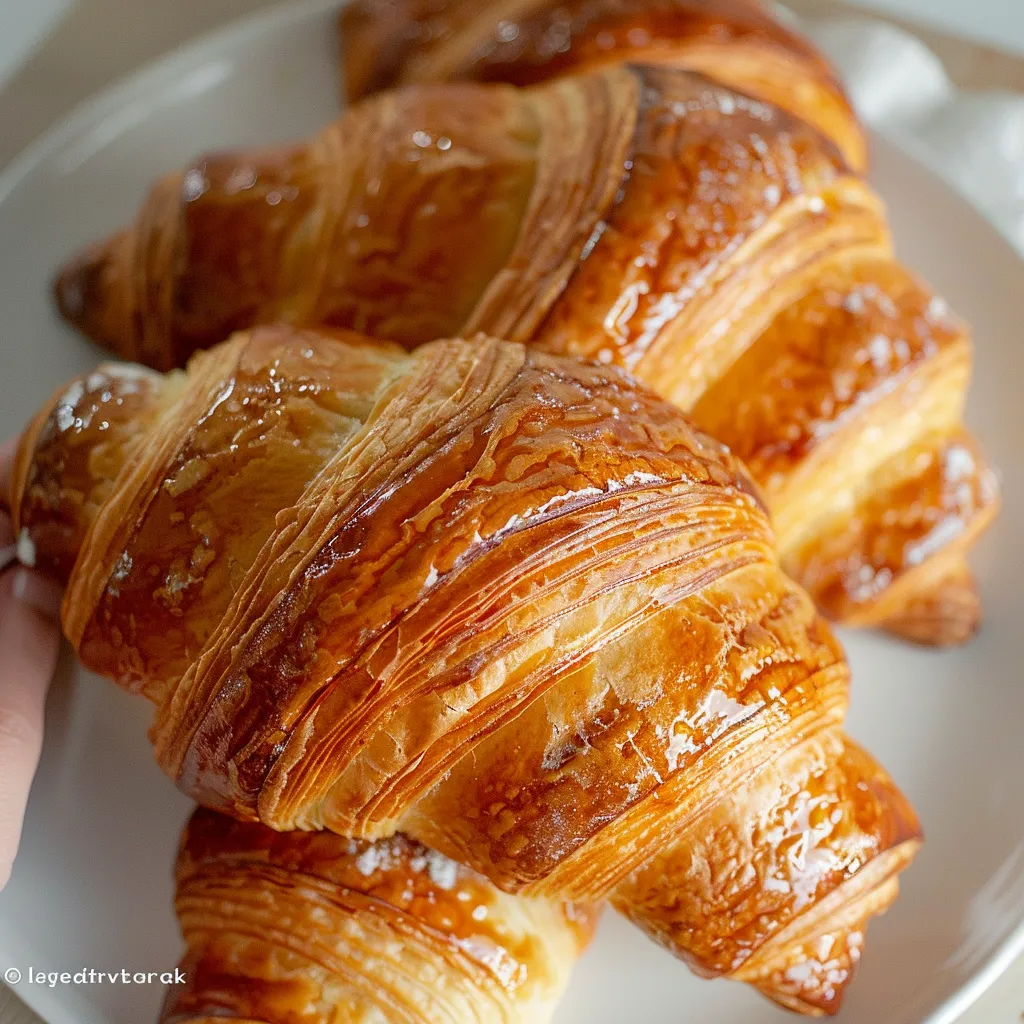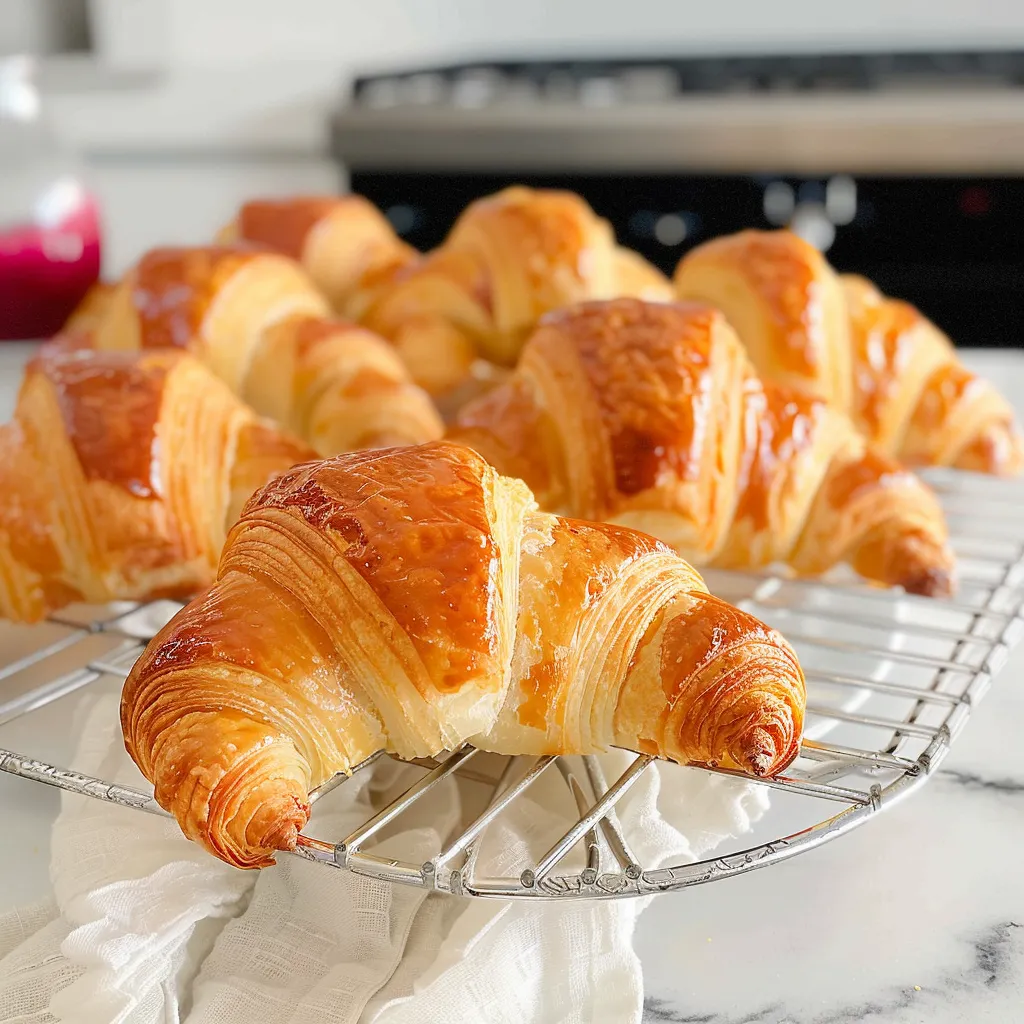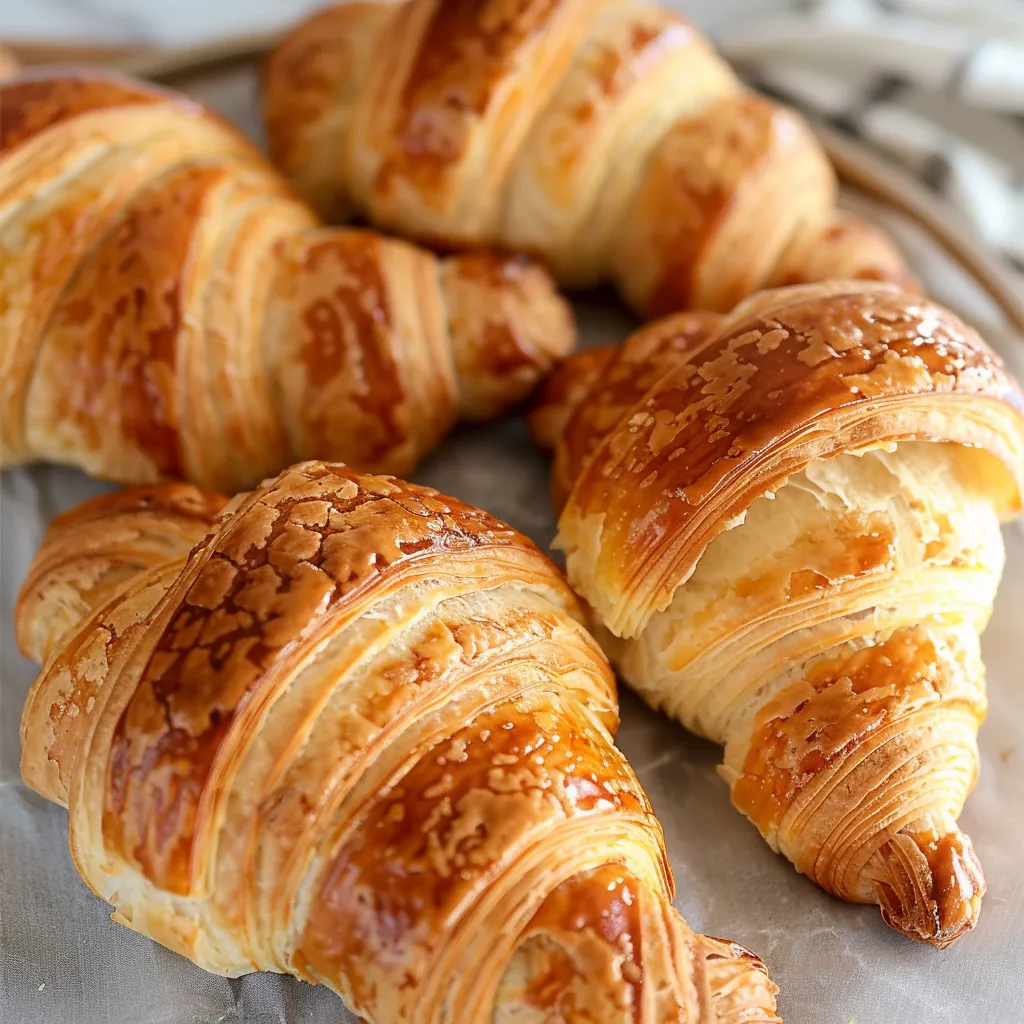 Pin to Favorites
Pin to Favorites
Creating perfect homemade croissants is a journey that combines precision, patience, and a touch of artistry. After studying traditional French techniques and countless early morning baking sessions, I've discovered that the secret lies not just in the ingredients, but in understanding how temperature and timing affect those precious buttery layers. Every fold of the dough brings you closer to that perfect, flaky texture that makes croissants so irresistible.
Last weekend, I taught this recipe to my niece, and watching her face light up as she pulled apart her first homemade croissant, revealing those perfect honeycomb layers inside, reminded me why this recipe is worth every minute of effort.
Essential Ingredients
- European-style Butter: Higher fat content creates better layers.
- All-Purpose Flour: Choose unbleached for best flavor.
- Active Dry Yeast: Fresh yeast ensures proper rise.
- Whole Milk: The fat content matters for tender results.
- Fine Sea Salt: Controls yeast growth and enhances flavor.
- Granulated Sugar: Feeds the yeast and adds subtle sweetness.
- Large Eggs: For egg wash only, should be room temperature.
 Pin to Favorites
Pin to Favorites
Detailed Cooking Instructions
- Initial Dough Development
- Warm milk to exactly 105°F. Sprinkle yeast over milk with a pinch of sugar. Let stand until foamy, about 5-10 minutes. Mix flour and salt in a large bowl. Add milk mixture gradually while mixing. Knead until smooth but slightly sticky. Shape into a rectangle and wrap well. Refrigerate for a minimum of 2 hours.
- Butter Block Creation
- Place cold butter between parchment sheets. Pound gently into an 8x5-inch rectangle. Keep edges straight and corners sharp. Chill until firm but pliable. Should be the same texture as dough.
- Lamination Process
- Roll dough into a 16x8-inch rectangle. Place butter block in center. Fold dough like a letter. Roll gently to 24x8 inches. Fold into thirds again. Wrap and chill for 1 hour. Repeat process twice more.
- Final Shaping
- Roll dough to 1/4-inch thickness. Cut into triangles with 5-inch bases. Make a small cut in the center of the base. Stretch points slightly. Roll from base to tip. Curve ends inward slightly. Place on lined baking sheets.
- Proofing and Baking
- Cover loosely with plastic wrap. Let rise until very puffy, 1-2 hours. Brush gently with egg wash. Bake at 375°F for 20-25 minutes. Rotate pan halfway through. Look for a deep golden color.
My first attempt at croissants was far from perfect, but each batch taught me something new about the delicate dance between butter and dough.
Temperature Control
If your kitchen is warm, work in 15-minute intervals, returning dough to the refrigerator when butter softens too much.
Make-Ahead Options
Shape croissants and freeze on baking sheets. Once frozen, transfer to freezer bags for up to 2 months.
Troubleshooting Common Issues
If butter starts breaking through, chill immediately. If croissants aren't rising, your room might be too cold - create a warm environment.
These croissants represent the pinnacle of bread baking, where technique and patience combine to create something truly magical. The time investment yields results that rival any French bakery, proving that sometimes the best things really do come to those who wait.
 Pin to Favorites
Pin to Favorites
Frequently Asked Questions
- → Why do croissants take so long to make?
- The multiple resting and chilling periods are essential for developing the flaky layers and proper texture.
- → Can I freeze unbaked croissants?
- Yes, shaped croissants can be frozen for up to 2 months and baked fresh after thawing and proofing.
- → How do I know when croissants are properly proofed?
- They should double in size and be slightly jiggly when gently shaken, taking 1-2 hours.
- → How long do fresh croissants last?
- They're best eaten the day of baking but can be stored in an airtight container for up to 2 days.
- → Why is butter temperature so important?
- The butter must stay cold throughout lamination to create distinct, flaky layers in the finished croissants.
